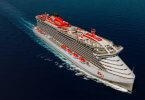Trip Insurance Roundup: Developments and Considerations for Cruise Travelers
Trip insurance has become an essential tool for cruise travelers, and recent industry developments demonstrate just how rapidly the market is evolving. In the last year travel insurance providers have launched new cruise‑specific products, while demand has reached record levels as travelers seek protection against unpredictable weather, illness and other disruptions. At the same time, policy complexity and varying levels of coverage mean cruisers need to do their homework. This roundup explores notable developments from the past six months and looks ahead to what sophisticated travelers should watch for, while weighing the pros and cons of buying coverage directly from the cruise line versus a specialist insurer. It finishes with expert insight for choosing the right plan.
A surge in cruise‑specific coverage
Demand for cruise insurance is booming. Squaremouth, a comparison service, reported in March 2025 that 74 percent of travelers this season were expected to insure their cruises, up from 38 percent in 2024. To meet this demand, Squaremouth’s Tin Leg brand released a new cruise insurance product tailored to cruisers. Tin Leg Cruise includes benefits not found in standard travel plans, such as compensation for itinerary changes ($250 per person), missed ports of call ($500 per person) after a delay and travel inconvenience coverage ($100 per person per day) for missed connections, confinement to the ship or delays. It even offers water‑level disruption coverage for river cruises disrupted by drought or floods.
Other insurers are similarly expanding their offerings. Berkshire Hathaway Travel Protection’s WaveCare plan, launched in 2025, integrates cruise‑specific benefits such as missed port and shipboard confinement coverage. Allianz Partners introduced a custom cruise insurance program for Norwegian Cruise Line customers in early 2025 that bundles emergency medical, evacuation and cabin confinement benefits. Meanwhile, smaller specialist firms like Trawick International have rolled out “Any Reason” policies that refund a percentage of trip cost when a traveler cancels without a covered reason. These products reflect a broader trend toward more flexible, customizable coverage that recognizes the unique risks of cruising.
Growth of the travel insurance market
The U.S. travel insurance market has grown rapidly. According to the U.S. Travel Insurance Association (USTIA), travel insurers paid out over US $4 billion in 2022 and protected about 77 million people through 89 million plans. By 2024, USTIA members protected 86.97 million people through 54.87 million plans. Rising trip values, pent‑up demand following the pandemic and an increase in severe weather events have all pushed travelers toward coverage. Insurtech companies have responded by simplifying the purchase process with mobile apps, 24/7 telemedicine access and instant claims reimbursement. For example, Allianz Partners’ TravelSmart app (launched mid‑2024) allows travelers to file claims and contact emergency services directly from their phone, and Berkro Hathaway’s Free Flight™ program pays flight delay benefits automatically when a delay is detected.
Pros and cons of buying insurance from the cruise line
Most major cruise lines sell their own “trip protection” plans at checkout. These plans are convenient: they are bundled with your reservation, often include pre‑existing medical condition waivers, and sometimes offer credit toward a future cruise if you cancel for a reason that is not covered. Cruise line policies may also include supplier default protection if the cruise line or tour operator goes bankrupt. However, these plans typically have lower benefit limits and fewer covered cancellation reasons than third‑party policies. They may only reimburse the portions of your trip purchased through the cruise line; flights, hotels and excursions booked independently might not be covered. Another drawback is that many cruise line policies issue future cruise credits instead of cash refunds, which may not help if you need money back.
Purchasing travel insurance from an independent provider offers greater flexibility. Third‑party policies usually provide higher medical and evacuation limits, trip interruption benefits, baggage delay, missed connection and cancel‑for‑any‑reason (CFAR) upgrades. Independent plans cover all components of your trip—including air and land arrangements—and pay claims in cash. Some insurers like Seven Corners and AIG Travel Guard offer primary medical coverage, meaning travelers do not have to file with their own health insurance first. However, independent policies must be purchased separately, require the traveler to compare options, and usually have to be bought within a certain timeframe after the initial trip deposit to waive pre‑existing condition exclusions.
Leading travel insurance providers for U.S. cruisers
- Allianz Global Assistance – One of the world’s largest travel insurers, Allianz offers single‑trip and annual plans with 24/7 global assistance, high medical and evacuation limits, and optional CFAR upgrades. Its new cruise policy for Norwegian Cruise Line includes onboard medical coverage, cabin confinement benefits and protection for formal wear and sports equipment.
- Berkshire Hathaway Travel Protection (BHTP) – BHTP’s WaveCare plan is designed specifically for cruisers, with missed port coverage, shipboard confinement benefits and cancellation and interruption coverage up to 100% of trip cost. BHTP also offers an automated flight delay benefit and a cashless claims process.
- Tin Leg – A brand of Squaremouth, Tin Leg’s new Cruise plan provides cruise‑specific coverages including itinerary change and missed port benefits. Tin Leg offers competitive pricing and strong medical and evacuation coverage.
- Seven Corners – Known for flexible plans, Seven Corners offers round‑the‑world and cruise‑friendly policies, with options for CFAR coverage and a 24‑hour multilingual assistance team. Its plans allow coverage for pre‑existing conditions if purchased within 20 days of initial trip payment.
- AIG Travel Guard – Travel Guard provides multiple tiers of coverage with optional add‑ons. Its Deluxe plan includes coverage for missed connections, itinerary change and 150% trip interruption reimbursement. The company offers a cruise rider that adds missed port and shipboard service disruption benefits.
- Travelex Insurance Services – Travelex’s Travel Select plan is popular with families. Travelers can upgrade to include adventure sports coverage and CFAR. Travelex also offers 24/7 travel assistance and kids‑free coverage.
- World Nomads – Suitable for younger cruisers seeking flexible medical and evacuation coverage, World Nomads offers plans that cover adventure sports and high‑risk activities.
- Nationwide – Nationwide’s Cruise Luxury plan offers high coverage limits and coverage for missed connections, weather delays and itinerary changes. It also provides reimbursement for unused pre‑paid excursions.
- Trawick International – Trawick’s Safe Travels Voyager plan includes trip cancellation and interruption up to 100% of trip cost, primary medical coverage up to $250,000, and optional CFAR.
When selecting a provider, sophisticated travelers should consider coverage limits (especially medical and evacuation), look for cruise‑specific benefits, confirm whether the policy is primary or secondary, check the fine print for exclusions (such as epidemics or acts of war) and ensure the company offers 24/7 emergency assistance.
Coverage trends and what’s ahead
Recent travel insurance headlines show companies are rolling out new digital tools and targeted products for specific traveler segments.
- Focus on older travelers: InsureMyTrip’s July 2025 guide for travelers over 50 notes that the right cruise travel insurance plan can cover emergency medical bills after an adventurous excursion and offers cancellation coverage due to a loved one having a baby. The article emphasizes that comprehensive policies provide secondary medical coverage and may include pre‑existing condition waivers if purchased soon after the initial trip deposit.
- Expanded benefits beyond trip cancellation: Tin Leg’s new cruise plan provides unique benefits like coverage for itinerary changes, missed ports and travel inconvenience. These cruise‑specific benefits recognize that a missed port or delayed embarkation can have a significant financial impact on travelers.
- Higher uptake and longer trips: Squaremouth’s data show more cruisers are insuring their trips and opting for longer, more expensive voyages. With the cruise industry launching longer world cruises and grand voyages that cost tens of thousands of dollars, travelers are seeking comprehensive policies that cover trip cancellation, interruption and medical emergencies.
- Integration with booking platforms: Cruise lines and tour operators are increasingly partnering with insurers to embed insurance into the booking process. Scenic Group, for instance, recently partnered with Allianz to offer travel protection during booking, giving guests the option to add coverage seamlessly. Similar tie‑ups are expected across the industry as lines look to provide one‑stop shopping and reduce friction.
- Digital claims and concierge services: Insurtech startups are using artificial intelligence to process claims in minutes and offering telemedicine services to travelers at sea. These developments make it easier for cruisers to receive medical advice or file claims without lengthy paperwork or international phone calls. As more providers adopt these innovations, expect faster reimbursement times and increased transparency.
Expert insight
Cruising exposes travelers to unique risks: ships often operate far from hospitals, weather can disrupt itineraries and port closures can strand passengers. Trip insurance is therefore more than a luxury—it’s a safeguard. The surge in travelers purchasing cruise‑specific policies reflects greater awareness of these risks. Buying insurance from the cruise line is convenient and may cover supplier default, but coverage is often limited and may be reimbursed as future credits rather than cash. Leading independent providers like Allianz, Berkshire Hathaway, Seven Corners and Tin Leg offer more robust protection, higher medical limits and customizable add‑ons such as CFAR and pre‑existing condition waivers. Travelers should purchase coverage soon after booking to maximize benefits and consider annual multi‑trip policies if they cruise frequently. Ultimately, the best policy is the one that matches your health, itinerary and risk tolerance. As climate change and geopolitical events add uncertainty to travel, comprehensive insurance has become an essential part of planning any cruise.
Note: Voyages Network does not provide financial or insurance-related advice, nor does it recommend specific insurance companies or products. It is important to do your own research, seek guidance from your trusted advisors, and make your own informed decisions about such matters.








